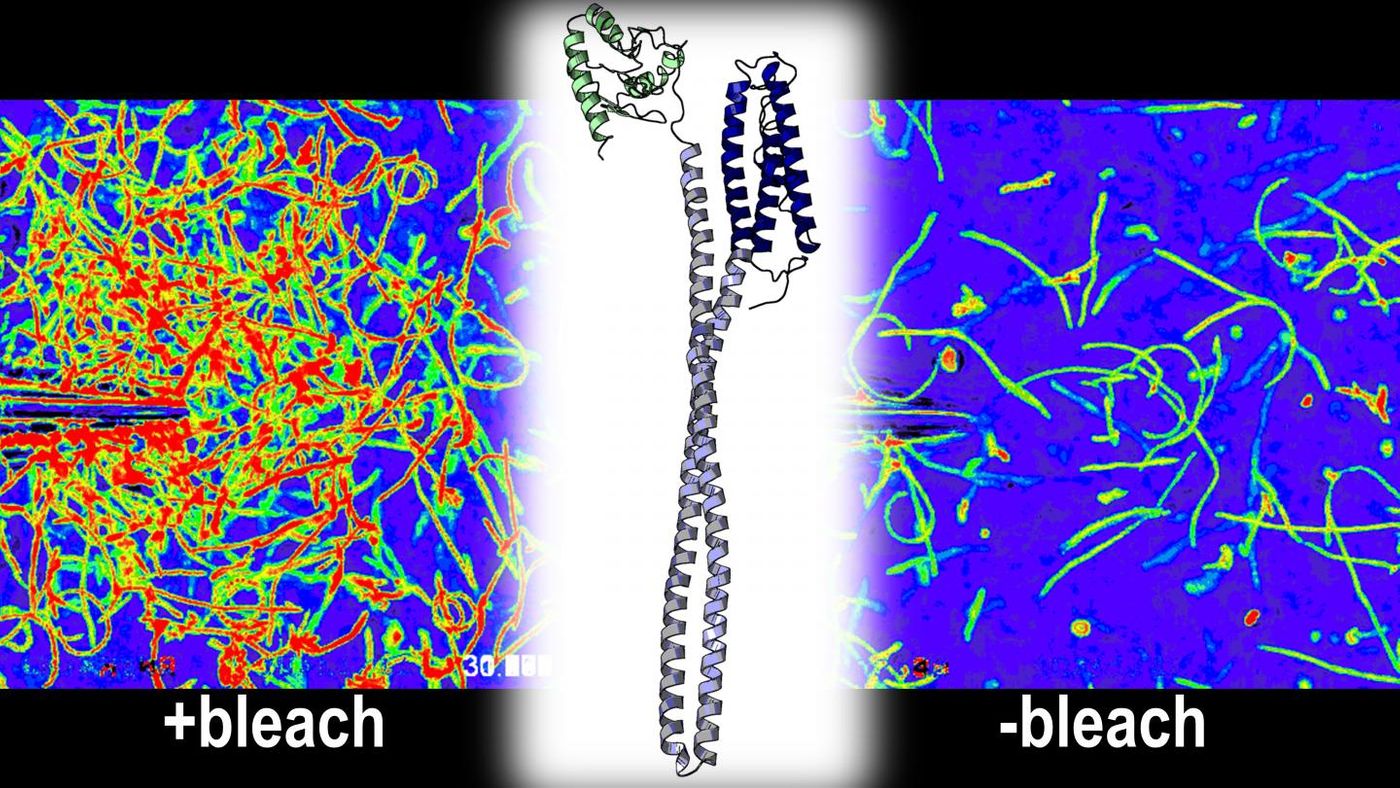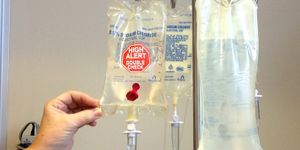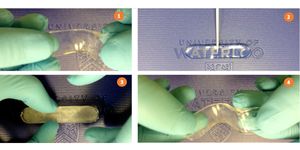A Protein Sensor That Helps a Stomach Bug Find a Good Home
A bacterial pathogen called Helicobacter pylori is known to colonize the stomach and cause ulcers. The bacterium is also attracted to bleach, and scientists have found a protein the microbe uses to detect it, called TlpD. Other bacteria, E. coli and S. enterica, also carry TlpD-like proteins that help them seek out bleach, which is released in small amounts by immune cells as they fight infection. The scientists suggested that the TlpD protein helps locate places where tissue is inflamed or damaged; that may assist the bacteria as it sets up a new colony and acquires nutrients. The findings, which may help create a way to prevent the pathogen from taking up residence in the stomach, have been reported in PLOS Biology.
"Part of the rationale for studying this particular protein is that we know the navigation system that Helicobacter pylori has is really important for the bacteria to be able to infect and cause disease," said lead study author Arden Perkins, a postdoctoral fellow at the University of Oregon (UO). "If we come to learn what the function of this protein is, there is potential that we might be able to disrupt its function with a new drug."
When H. pylori grow in the stomach, a colony can lead to chronic inflammation and ulcers and can influence the development of stomach cancer. Researchers think that H. pylori exert a major impact on public health; in some regions, almost all residents are infected with the bug. It can persist in the stomach by hiding in tiny pockets called the stomach glands, where they may be provided some protection from the gastric juices.
Like most bacteria, H. pylori can sense chemicals in their environment with special proteins. They can then change their flagellar movement to get closer, or get away from the molecule. In this case, the UO scientists wanted to know how it sensed hypochlorous acid (HOCI). Produced by white blood cells, HOCI is a part of our immune arsenal against microbial invaders.
"It's important that we understand the protein machinery of bleach sensing," explained study co-author Karen Guillemin, a professor of biology and member of the UO's Institute of Molecular Biology. "It turns out that this is not a machinery that is exclusive to Helicobacter pylori and it allows us insights into other bacteria that have similar proteins."
The researchers knew about TlpD and that it acted as a sensor. After isolating the proteins that transmit the TlpD signal to the flagellum, the researchers found that TlpD was attracted to bleach. Additional work confirmed the surprising results. The bacteria moved toward what's thought to be a noxious chemical, but only at the low levels found in the human body.
During inflammation, the bleach that is released would usually kill bacteria. In the case of H. pylori, the microbe is adapted to living in inflamed tissue and may be impervious to it. The bleach may actually help H. pylori find the stomach glands, where it likes to live.
"We know that in the course of its infection, the bacteria is able to live in inflamed tissue for years and years, so this result suggests that maybe part of the way it does that is by being attracted to inflamed tissue," Perkins said. "It's clearly evolved sufficient protections to be able to endure that environment even though there are potentially high concentrations of bleach there."
About 30 percent of H. pylori infections are resistant to antibiotics, so this work can help create new therapeutics. This study may help scientists stop bacteria from sensing and moving in their environment, which is a totally different approach from typical antibiotics that attack cell walls. Proteins that are similar to TlpD can be found in other bacteria as well.
"It might be that there are less strong selective pressures for bacteria to overcome a drug that just makes them disoriented," Guillemin said. "By 2050 there's going to be pandemics of antibiotic-resistant bacteria, so there's a real need to think about new strategies."
Sources: AAAS/Eurekalert! via University of Oregon, PLOS Biology










